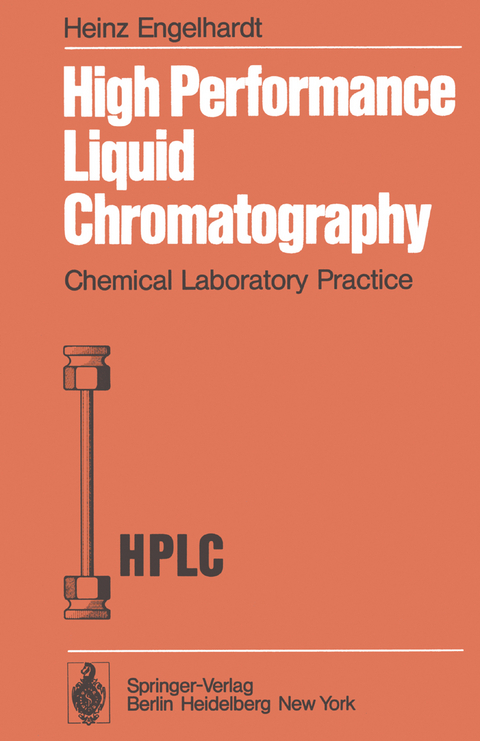
High Performance Liquid Chromatography
Springer Berlin (Verlag)
978-3-642-67066-4 (ISBN)
I. Chromatographic Processes.- References Chapter I.- II. Fundamentals of Chromatography.- A. Retention.- B. Linear Flow Rate, Porosity, Permeability.- C. Band Broadening.- D. Resolution.- E. Dependence of Band Broadening on Flow Rate.- F. Band Broadening and Particle Size.- G. Extra-Column Band Broadening.- H. Optimum Analysis Conditions and Analysis Time.- I. Selection of a Suitable Column.- References Chapter II.- III. Equipment for HPLC.- A. Solvent Reservoir - Degassing of the Eluent.- B. Pumps.- C. Damping of the Pulsations.- D. Sample Introduction.- E. The Column.- F. Thermostating.- G. Measurement of the Flow Rate.- H. Fraction Collectors.- I. Recorders.- J. Instrumentation for Gradient Elution.- K. Safety Measures.- References Chapter III.- IV. Detectors.- A. UV Detectors.- B. Differential Refractometer.- C. Microadsorption Detector.- D. Transport Detector (Flame Ionization Detector).- E. Fluorescence Detector.- F. Other Detectors.- G. Comparison of the Important Detectors.- H. Reaction Detectors.- References Chapter IV.- V. Stationary Phases.- A. Packing Materials for Adsorption and Partition Chromatography.- B. Chemically Modified Supports.- C. Ion Exchangers.- D. Stationary Phases for Exclusion Chromatography.- References Chapter V.- VI. Adsorption Chromatography.- I. Polar Stationary Phases.- II. Nonpolar Stationary Phases.- III. The General Elution Problem.- IV. Applications of Adsorption Chromatography.- References Chapter VI.- VII. Partition Chromatography.- A. Introduction.- B. Supports and Liquid Phases.- C. Properties of the Column.- D. Applications.- E. Ion-pair Chromatography.- References Chapter VII.- VIII. Ion-Exchange Chromatography.- A. Principle.- B. Ion Exchange Materials.- C. Characterization of the Ion Exchangers.- D. Optimizing aSeparation.- E. Applications.- References Chapter VIII.- IX. Exclusion Chromatography. Gel Permeation Chromatography.- A. Introduction.- B. Basics of Exclusion Chromatography.- C. Stationary Phases for Exclusion Chromatography.- D. Applications of Exclusion Chromatography.- References Chapter IX.- X. Selection of the Separation System.- References Chapter X.- XI. Special Techniques.- A. Preparative Chromatography.- B. Qualitative Analysis.- C. Quantitative Analysis.- D. Trace Analysis.- References Chapter XI.- XII. Purification of Solvents.- References Chapter XII.
| Erscheint lt. Verlag | 19.1.2012 |
|---|---|
| Reihe/Serie | Chemical Laboratory Practice |
| Übersetzer | G. Gutnikov |
| Zusatzinfo | XII, 254 p. |
| Verlagsort | Berlin |
| Sprache | englisch |
| Maße | 170 x 244 mm |
| Gewicht | 467 g |
| Themenwelt | Naturwissenschaften ► Biologie ► Biochemie |
| Naturwissenschaften ► Chemie ► Analytische Chemie | |
| Naturwissenschaften ► Chemie ► Technische Chemie | |
| Technik ► Umwelttechnik / Biotechnologie | |
| Schlagworte | Analytical Chemistry • Chemistry • Chromatography • ecotoxicology • Flüssigkeitschromatographie • Performance |
| ISBN-10 | 3-642-67066-0 / 3642670660 |
| ISBN-13 | 978-3-642-67066-4 / 9783642670664 |
| Zustand | Neuware |
| Haben Sie eine Frage zum Produkt? |
aus dem Bereich


